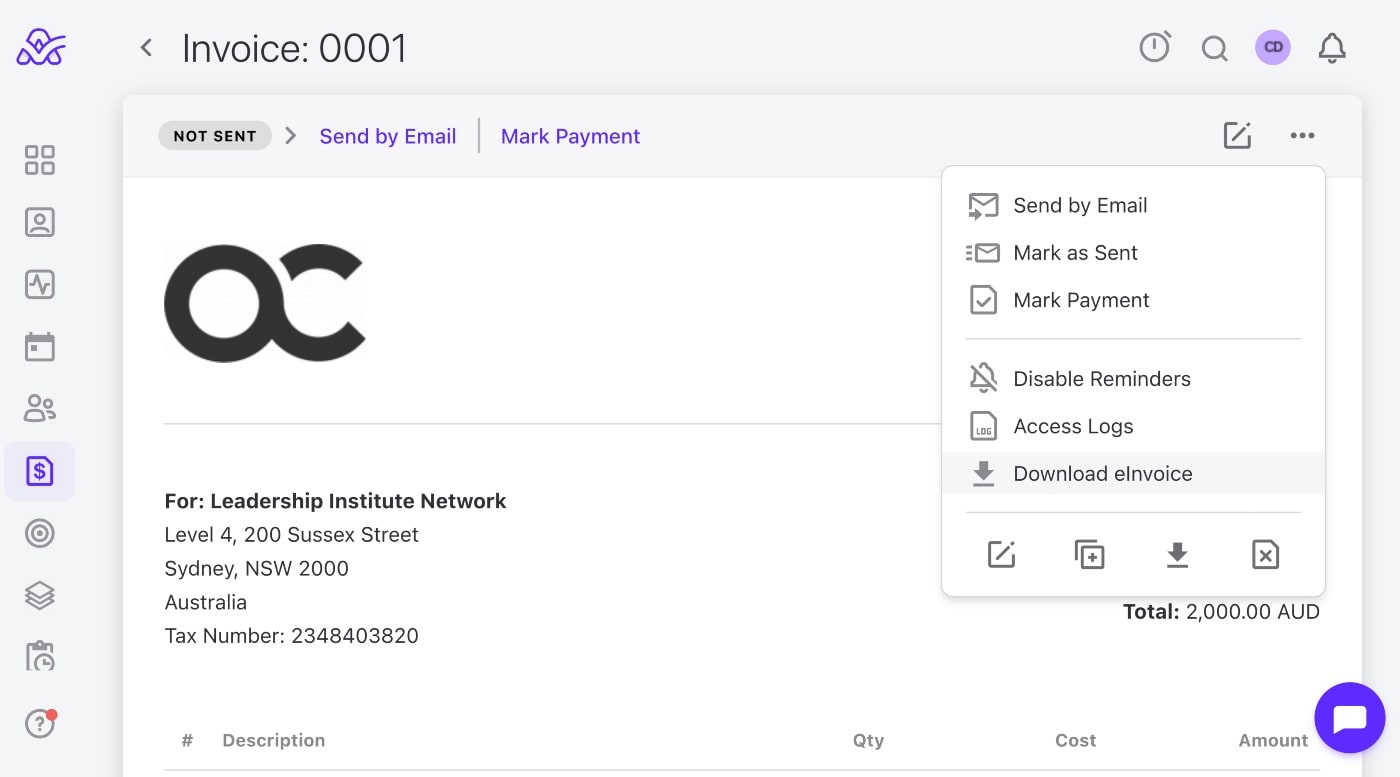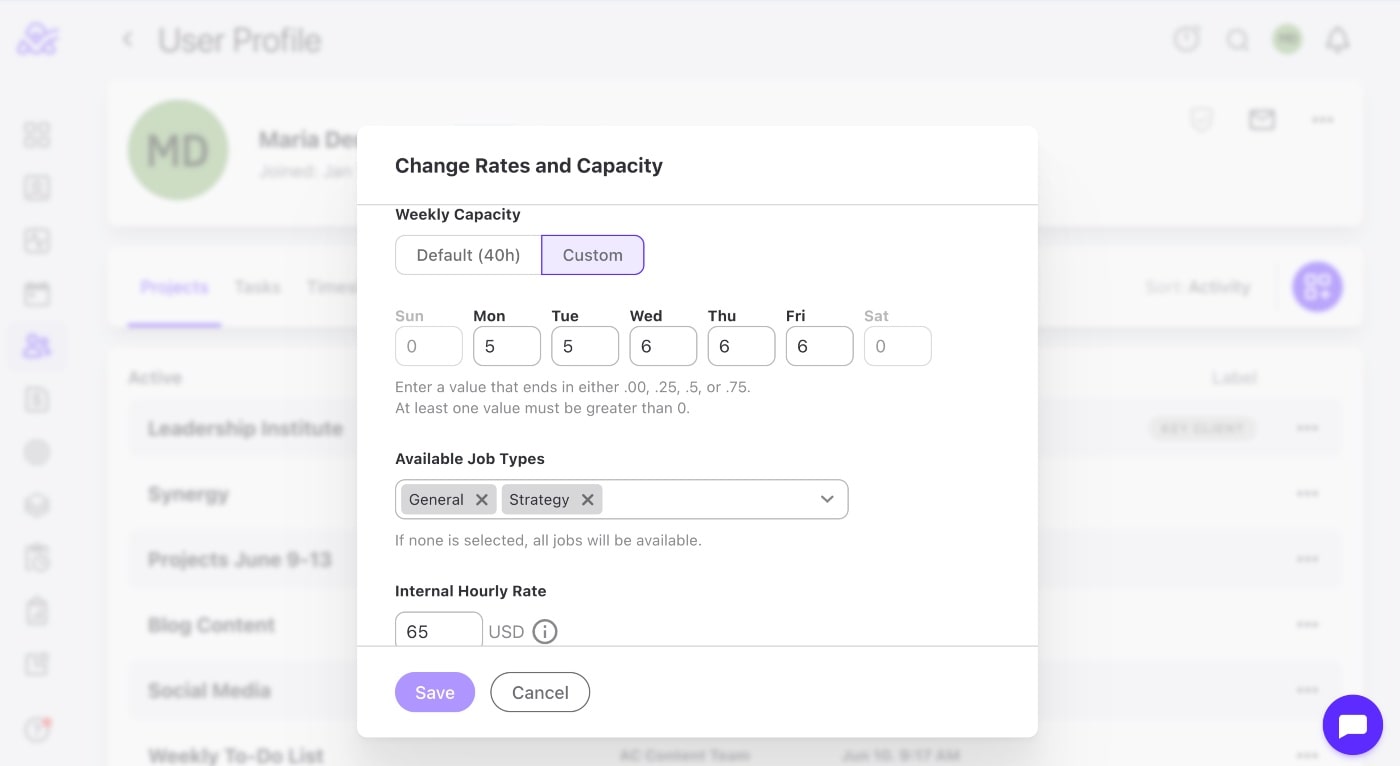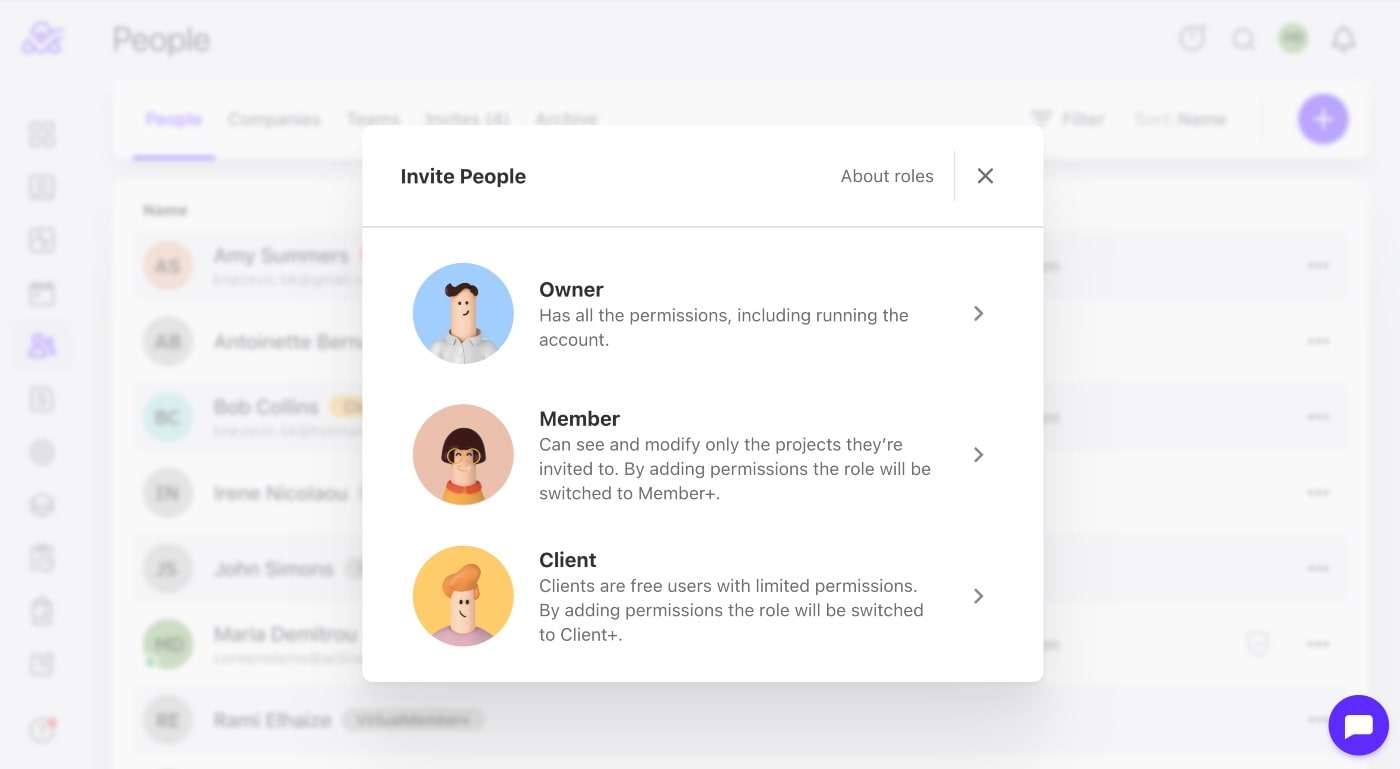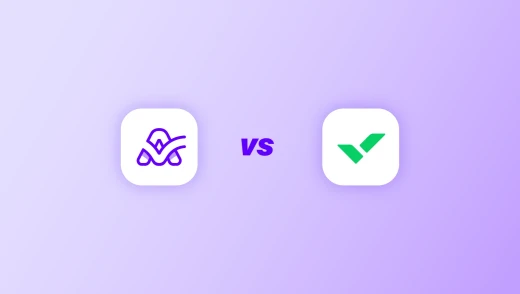Do you want a project management tool or a complete agency workflow system?
That’s the question you need to ask yourself when choosing between ActiveCollab and Wrike in 2025.
While Wrike may offer deep project management, ActiveCollab brings more to the table. It combines all aspects of agency, client, and project management to simplify operations, allowing you to scale with ease.
Why ActiveCollab is the best Wrike alternative in 2025
ActiveCollab is the best Wrike alternative for agencies in 2025 because it’s a true, all-in-one agency product.
It covers the full project lifecycle, from quotes and tasks to time tracking, client management, workload management, invoicing, and even payments.
On top of that, you’ll pay 60% less when compared to Wrike to have all these essential features that make up the lifeblood of your agency workflows.
You basically get everything you need to have full oversight and run a profitable agency from within one neat system for a lower price, with less setup fuss.
While Wrike has some fancy bells and whistles, including extensive AI tools, dynamic request forms, and visual collaboration, you’ll still need to turn to integrations for things like invoicing. So you won’t get a complete platform unless you’re ready and willing to turn to add-ons.
Before we dive into detail on some of the main reasons why ActiveCollab is better aligned for agency and client project management, here’s a quick snapshot of how the two tools compare.
Key decision-makers | ActiveCollab | Wrike |
Setup & onboarding | Intuitive agency-centred design lets you create projects instantly, even if you’re not tech-savvy | Powerful but complex platform with a steeper learning curve for advanced features, which require configuration |
End-to-end client project management | Complete hub including quotes, projects, collaboration, time tracking, invoicing, and payment – all connected | Lacks essential native features such as billing and time tracking in low-tier plans, but offers extensive client approval options |
Profitability & productivity dashboards | Native project, time, budget, and profitability reports with filters and custom dashboards make it a plug-and-play | Advanced analytics that require configuration, manual setup up and data input, which favours an analyst’s experience |
Workload & capacity planning | Intuitive, capacity planning & real-time workload management with basic setup | Advanced resource management is ideal for large teams and complex projects, but it requires configuration |
Client collaboration & billing | Unlimited external collaborators, client-inclusive approach with granular permissions & financial transparency options & paid users for advanced access | Capped number of guests in projects with a focus on client collaboration for deliverables through proofing rather than full project space access (unless paid external user) |
Ideal users | Agencies, consultancies, and service businesses after an out-of-the-box full client and agency management system | Versatile platform for a range of industries, with the largest user base coming from mid-market and enterprise teams |
Value for money | All plans offer more essential features in a centralized hub for businesses to connect & cover all their project & operational needs | For agencies, the low-tier plans lack mission-critical features (time-tracking & billing), and high-tier plans are considerably higher with native feature gaps |
ActiveCollab is a complete agency platform, but Wrike lacks native invoicing
Agencies need a product that lets them manage an entire client project lifecycle from initial proposal and quote to the final invoice. So having project management and financial management connected and tied up in one place is a huge advantage. This is one place where ActiveCollab differs drastically from Wrike.
What ActiveCollab offers is an end-to-end platform, with native features for all the core agency functions, which include invoicing and payments – no integrations, plugins, or third-party apps needed.
The tool isn’t just a project organizer and tracker; it’s a complete workflow platform.

In ActiveCollab, you can create a client project, allocate tasks, assign due dates, collaborate with your team and clients, track time, and then use those timesheets to convert the work into an invoice. Without leaving the app, you can send invoices (including e-invoices) off to clients, and have them pay instantly via several online payment options, including PayPal and Stripe.

So when ActiveCollab says on its home page: “From a task to an invoice. Just like that,” we literally mean it.
On the other hand, while Wrike is a highly capable and robust platform for managing client projects, it doesn’t offer native invoicing capabilities. However, you can build out the tool to include various third-party apps to fill this gap.
To sum it up:
If you are looking for one tool to manage your entire client project workflow, invoicing & payments included, you’ll get that with ActiveCollab.
If you decide to go with Wrike, you’ll need to turn to an add-on for billing.
ActiveCollab ties workloads to time & financials automatically, Wrike needs setup
Knowing who has capacity and having real-time insight into how project tasks feed into financials remains one of the biggest challenges for agency owners and team leads. ActiveCollab makes this connection by giving you the integrated visibility you need via the Workload feature. Every assigned task ties into your team's workload, time logs, and project financials. That’s exactly what ActiveCollab's product gives you.
Not only will this let you organize your people’s time effectively across projects, but it will also help you manage overhead costs.

Even though both tools offer workload management, they offer different types of workload management and require different levels of setup.
With ActiveCollab, the minute you log in, you can set customized capacity hours and rates for your entire team. The minute you assign a task with an estimated number of hours it will take, those estimates will feed into each person’s workload and the project’s budget.

As your people log hours on tasks, the platform automatically records the time on the timesheet, counts it against your set capacity, and computes the cost incurred (for invoicing) if the hours are marked as billable.
So with ActiveCollab, you always have an accurate birds-eye view of your entire team’s utilization rate, as well as available capacity.
Wrike takes a different approach with workloads. While it does offer time tracking and resource management on higher plans, the platform doesn’t tie hours to any billing rates or financials. To achieve a similar level of insights, you’d need to set up custom fields or add an integration.
To sum it up:
If you need a tool to connect the dots between people, tasks, time logs, and financial impact, you need ActiveCollab.
If you want to take a granular, more customized approach to resource planning and forecasting, Wrike will let you configure fields to show the data you need.
ActiveCollab allows unlimited clients for collaboration options, while Wrike sets caps & limits
Agency clients vary. Some give you full freedom to run with the approved brief, while others like to have a more hands-on approach. Whichever type you end up with, ActiveCollab has a client collaborator option to fit.
At its core, it’s a platform that’s designed with client collaboration in mind. That’s why it has made bringing clients into the platform simple.

You decide exactly how open and collaborative each client project will be. You can moderate access, share only what’s relevant, and keep internal work and files private. And unlike Wrike, there’s no cap on the number of clients you can invite.
ActiveCollab offers two types of client or external collaborator roles: Client Role (free) and Client+ Role (paid), where the latter is a more empowered version, offering deeper access and visibility into work.

Another feature some agencies might appreciate is the ability to share logged hours and costs on a project. This can build trust and provide transparency on true project costs and time requirements. It paints a clear picture of how the client’s money is being spent.
On the other side, we have Wrike, which also offers two types of external roles: Viewer (free) and External User (paid), where the latter again has more robust access and permissions. However, when you compare what the free Client Role in ActiveCollab can do with the equivalent, also free Viewer client profile in Wrike, you’ll see the latter is more confined.
So to sum it up:
Even though both tools offer external collaboration options, ActiveCollab offers more flexibility. When it comes to communication, your people can engage with and respond to stakeholders according to their preferences.
And if you decide you want to give your client the highest possible level of access, it will cost you 60% less with ActiveCollab.
ActiveCollab offers time tracking for all, while Wrike restricts it to top-tier plans
Time tracking is an essential and non-negotiable feature for most agencies. This is true for all agency pricing models, whether you bill hourly, by project, or retainer. Without it, it’s difficult to understand team productivity and profit margins.
With ActiveCollab, time tracking is a given, no matter which plan you choose.
Every user can log time on tasks, use timers to track work in real time, and generate personal timesheets or project time reports. Managers can then review those logs, adjust them if needed, and quickly see how each individual’s time is being spent across projects.
The concept of integrated task time tracking is so central to the tool that you can mark any time log as a billable or non-billable, so it can be fed through to generate invoices and understand overhead costs.

On the other hand, you have Wrike, which doesn’t offer native time tracking unless you’re on one of the higher-tier plans (Business or above). This can be problematic for smaller teams because the cost per user increases significantly for a fairly basic feature, which can be frustrating.
So to sum it up:
ActiveCollab treats time tracking as a core agency project management feature – it’s a given.
Wrike pushes it into premium territory where you either have to move to a higher plan or use a third-party app. Either way, you’ll need to pay more for a fairly standard and expected feature.
ActiveCollab or Wrike: Which is easier to use & scale with?
Adoption and scalability are critical factors for agencies when choosing a project management solution.
When you compare the two tools on setup alone, you’ll find ActiveCollab is an out-of-the-box platform, while Wrike might remind you a little bit of Monday’s project management tool setup, where you need to answer some questions before you enter the platform.
ActiveCollab makes adoption easy with its intuitive and clutter-free interface.
Because it's focused on core needs, many users report almost no learning curve. Small and medium teams like it because they can create projects instantly, invite clients, and start working on day one without extensive setup or training. It’s a ready-made platform you can use as is.
Wrike's product has a more demanding setup and a steeper learning curve. Its interface is more complex and requires more time to configure workflows and dashboards to get those core agency project functionalities in place so they talk to each other.
For seasoned project managers, its depth and customization options can be an advantage, but for many agencies, it can feel like overkill.
When it comes to scalability, Wrike works well for enterprise teams managing more complex projects that need advanced security and automation options.
ActiveCollab, with its productivity and profitability features and connected time, task, and budget workflows, is specifically tailored for scaling agencies.
It gives you a centralized platform that collates all the data you need to make better-informed decisions, especially when the time comes to expand and grow your business.
You can take that data, slice it, dice it, and use it to create reports and dashboards to understand which projects and clients are making money, and where you might be losing out.
When you compare ActiveCollab & Wrike on price, which is better value?
For most agencies and small businesses, ActiveCollab’s all-in-one pricing structure is the more budget-friendly and practical choice. Why? Because it gives you all the fundamental features in one platform, for a significantly lower price, and you don’t need to turn to any third-party apps.
With ActiveCollab, you can start with a lower-tier plan and use the basics, such as project and task management, time tracking, and team and client collaboration. As your needs grow, simply upgrade to get access to more advanced features like workload and capacity planning.
Ultimately, it provides the core and even advanced features at a lower price point than Wrike’s comparable plans.
So, unless your agency has very specific needs that align with Wrike’s unique features, it’s hard to justify the substantially higher cost of Wrike, given that you’d still need additional apps to fill some of its gaps.
And because ActiveCollab consolidates multiple functions, many agencies find they can save money by cancelling other software subscriptions.
ActiveCollab: The complete agency workflow tool for agencies
All project management tools were built to simplify manual human tasks and organize workflows for efficient delivery. But before proceeding to the Wrike free trial, take a minute to go through all the feature categories. Visit the pricing page of their website to understand the capabilities that each plan provides access to.
ActiveCollab was built to follow agency workflows. If we had to choose one word to describe it, that word would be invaluable. It's been built to support teams that need to review and verify project profitability and solve agency challenges through helpful insights.
From the first client quote to the final invoice, everything flows inside a single, intuitive system. Time logs automatically roll into the budget and invoices. Workload management ties directly to profitability reports. And client access can be granted and controlled to fit a variety of collaboration levels.
What ActiveCollab provides is a project and business management platform for all agency types, from advertising to creative and everything in between. It's suitable for service businesses that want to understand their operations, serve clients better, and improve productivity.
It’s a streamlined tool that gives you and your team everything to run and grow a profitable agency. For all service-type creatives, including marketing agencies, consultancies, and design studios, ActiveCollab covers the full spectrum of needs.
Want to know what this unified action plan can look like for your business? With one click, you can sign up for our 14-day free trial or book a demo with one of our people to see how we help turn blocked business productivity into a profit-driven team in seconds!
